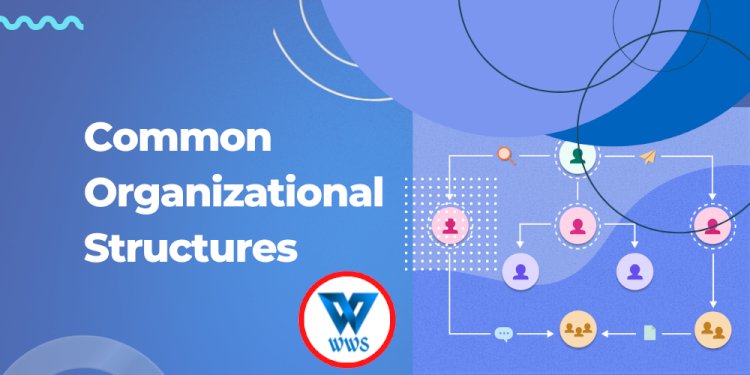Common Organizational Structures - How to Execute Strategy through Organizational Design?
An organizational structure defines the framework within which an organization's operations are directed and controlled. It can be hierarchical or matrix-based, and it may be defined by a global company or local teams with varying degrees of influence. In this article, we'll explore some of the most common types of organizational structures in use today: simple structure, functional structure, multidivisional structure, and matrix structure.

Simple Structure
In the simplest organizational structure, one person has authority over all of your organization’s operations. This is a very common structure in small organizations, and it can work well when everyone knows what they’re doing and there’s not a lot of cross-departmental coordination.
For example, you might have an entrepreneur who owns an online business as their sole employee. If they need to hire someone to do marketing or sales, they can just hire them on contract rather than incorporating them into their company structure immediately.
This person could also be responsible for hiring new employees (if any), setting pay rates and bonuses, handling vacation days and sick leave policies, and making decisions about office space—anything that affects how employees work together in the office falls under this manager's purview. However, unlike other structures where managers report directly to higher-ups on matters such as budgeting or staffing levels in each department within the organization (more on that later), simple structures don’t have formal reporting lines because there isn't anyone above this person who needs to know what's happening day-to-day at each level within the organization: it's just one person making sure everything gets done effectively!
Functional Structure
A functional structure is based on the major functions (or activities) of an organization. For example, a hospital might organize its human resources department into separate departments for nursing, housekeeping and maintenance, food services, and so on. This can be a useful organizational structure if your business has highly specialized areas of activity that require different types of people with different qualifications to work together to achieve common goals.
For example, say you are starting up a new company that makes organic dog treats out of locally sourced ingredients. You could have one department dedicated to research and development where they work out what ingredients go best together, another department where they develop packaging designs and do market research into who your customers are going to be—and so on.
Multidivisional Structure
A multidivisional structure is a type of organizational structure in which a company's divisions are separate business units, each with its own profit and loss statement. Each division is managed by a vice president (VP). The CEO is responsible for the overall performance of the firm and delegates authority to VPs who manage their respective business units. This type of organization may be useful when it is necessary to encourage strong competition between independent departments within your organization because it allows you as an executive to reward your best managers while penalizing those who fail to perform or who do not meet expectations.
Matrix Structure
A matrix structure is a hybrid of functional and multidivisional structures. The organizational design allows for a more flexible structure than the purely functional or divisional structures but has some disadvantages as well. Matrix organizations are used when the firm operates in different market segments with different strategies. They can also be used when the firm has multiple divisions that perform similar functions and where these divisions are geographically dispersed, such as in a service industry or technology company.
A matrix organization has one or more departments reporting to each manager at both levels of the management hierarchy (first level and second level), which means that employees report to two managers instead of just one manager like in other types of organizational structures such as functional structure or divisional structure respectively. This makes it easier for employees with different skillsets who may need access to multiple resources from different departments within their organization at once a time without having to wait on approvals from higher-level managers every time they want something done which would normally happen under either functional structures where only one department exists per role type within an organization
An Organizational Structure Defines The Framework Within Which An Organization's Operations Are Directed And Controlled.
An organizational structure defines the framework within which an organization's operations are directed and controlled. In other words, it's the way in which an organization is organized to perform its mission.
Key Takeaways
Organizational structures must be tailored to the needs of the organization and its employees. The structure that works best for one company may not work well for another, so it’s important to choose a structure that fits your company's culture and business objectives.
Executives must select among the four types of structure Each structure has unique advantages, remember the selection of structures involves a series of trade-offs.

 Martin Jacob
Martin Jacob 












